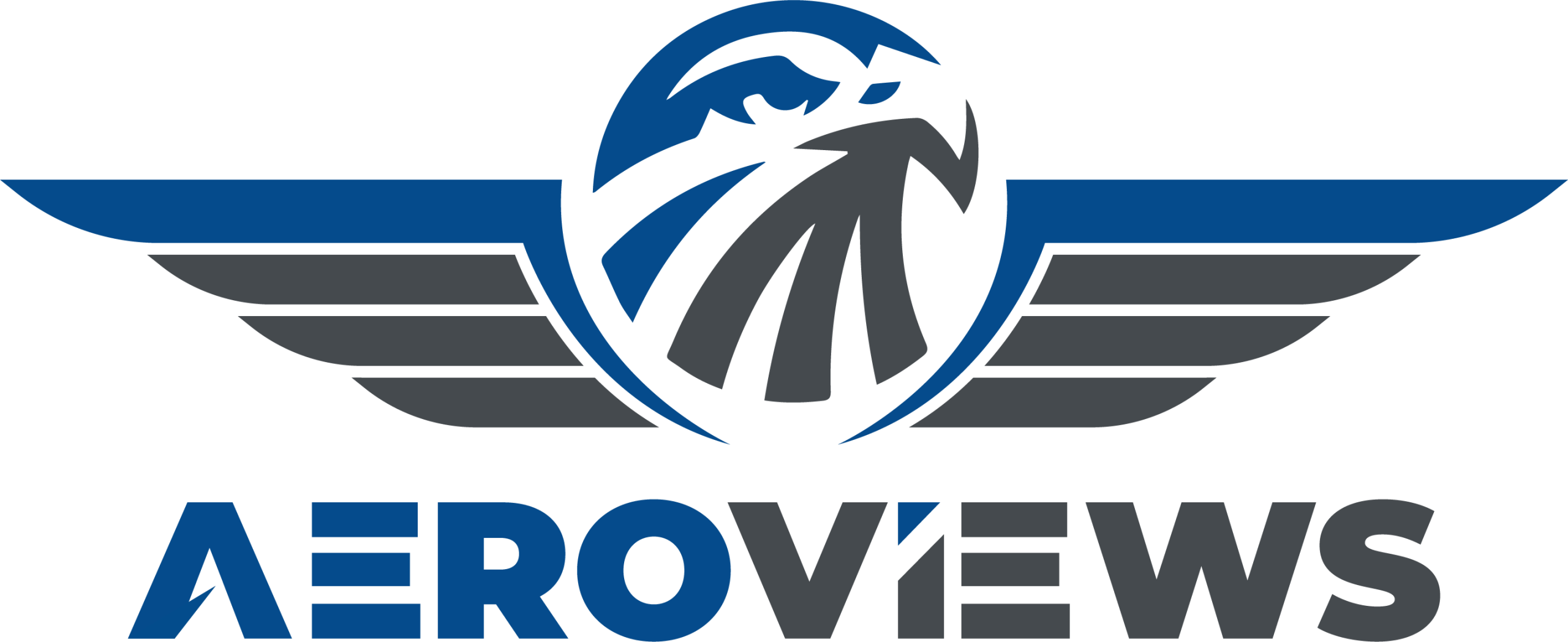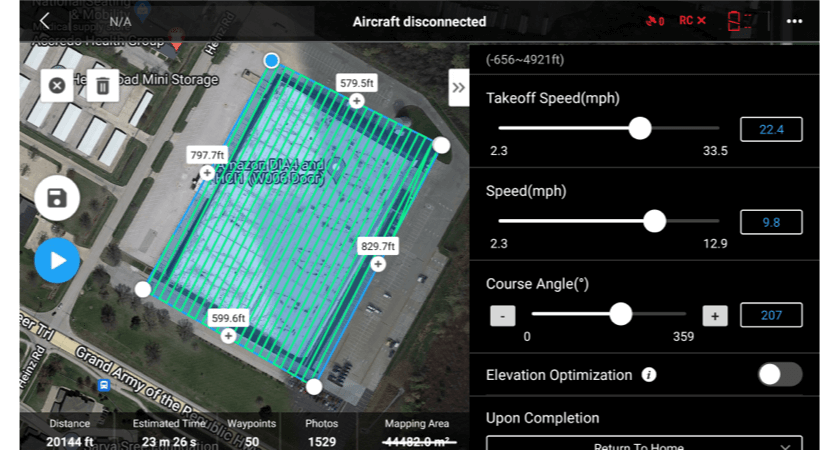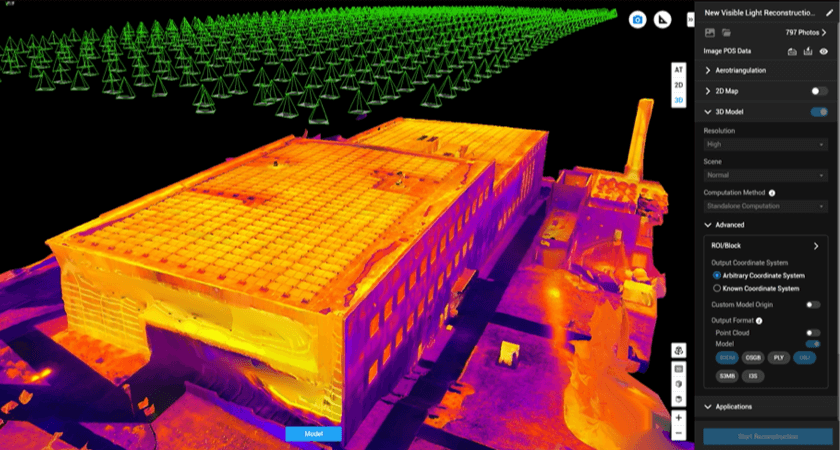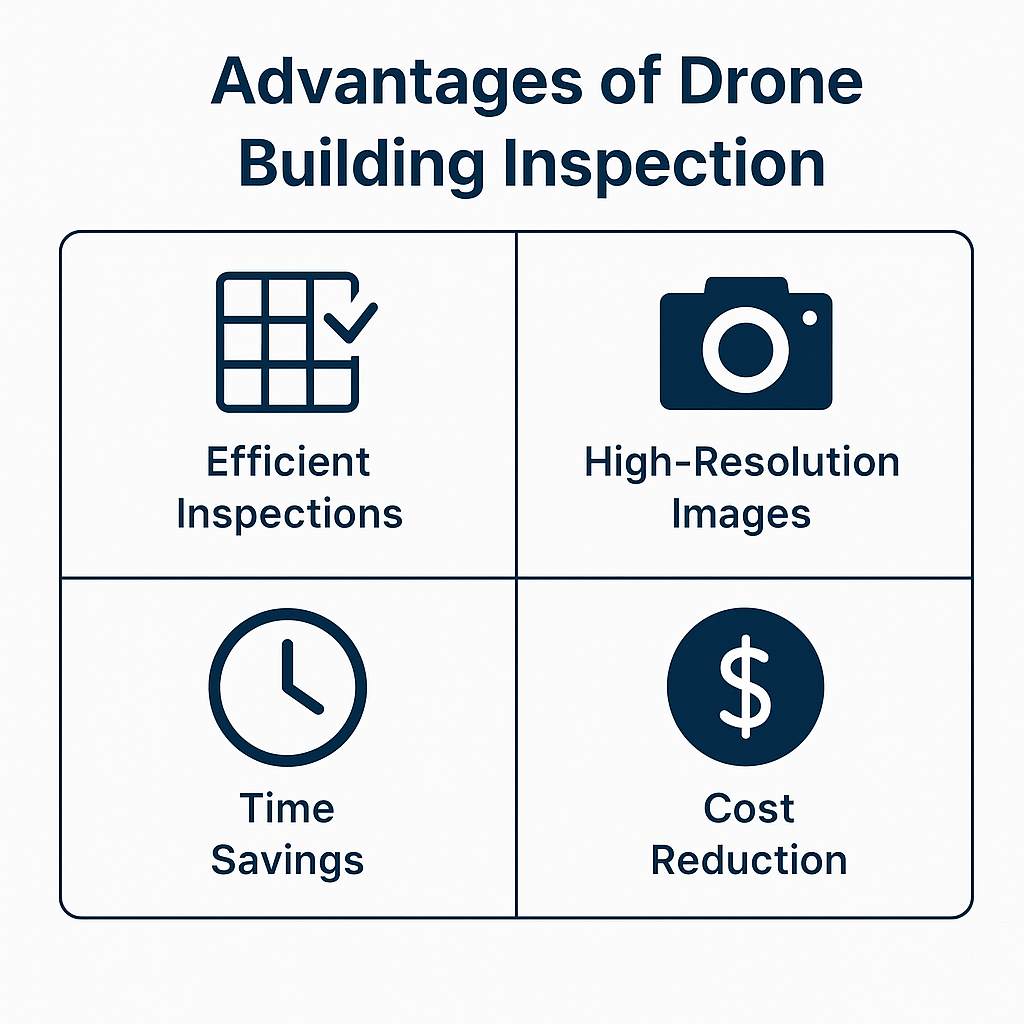Drone Building Inspection Services
Inspecting buildings the traditional way often means scaffolding, lifts, or manual walkarounds — all time-consuming, expensive, and risky for personnel. At AeroViews, we take a smarter approach. Our drone building inspection services deliver high-resolution, actionable data from above — with zero disruption to your occupants or operations.
Whether you manage commercial real estate, industrial facilities, government buildings, or high-rise properties, drone-based inspections offer a faster, safer, and more cost-effective way to assess exterior conditions. We capture detailed visual imagery, thermal anomalies, and structural insights in a fraction of the time — and without anyone leaving the ground.
From roof elements and facade materials to window seals and mechanical systems, our team helps clients detect issues early, plan maintenance more efficiently, and reduce liability exposure — all through FAA-certified aerial data collection.
If your building needs inspection, don’t reach for scaffolding. Reach for drone-based precision.
What Is a Drone Building Inspection?
A drone building inspection is a method of assessing the condition of a building’s exterior using unmanned aerial vehicles (UAVs). Rather than relying on scaffolding, boom lifts, or rope access to inspect difficult or elevated areas, drones can quickly capture high-resolution imagery and data from all sides of a structure — including hard-to-reach roofs, facades, parapets, and mechanical systems.
At AeroViews, our drone inspections are tailored to commercial buildings, industrial facilities, government properties, and high-rises. Our pilots fly advanced camera drones equipped with zoom optics or thermal sensors, allowing us to document issues like:
- Cracks in concrete or masonry
- Failed sealants or window joints
- Moisture intrusion or corrosion
- Material deterioration due to age or weather
- HVAC or mechanical unit damage
This method is faster, safer, and more affordable than traditional inspections — especially in urban or dense environments.
Organizations like the International Facility Management Association (IFMA) and InterNACHI acknowledge drone inspections as a modern, compliant way to manage building assets more efficiently. The FAA also permits commercial building inspections under Part 107, provided flights are conducted by certified remote pilots — which all AeroViews operators are.
By flying along a building’s perimeter and vertical face, our team captures comprehensive imagery that supports engineering evaluations, repair estimates, and facility condition reports — without requiring anyone to leave the ground.
What Can Be Inspected with Drones?
Drone building inspections provide a faster, safer, and more precise way to inspect everything from high-rise apartments to complex commercial properties. By using inspection drones equipped with zoom or thermal payloads, we capture high-resolution images and accurate data that supports critical decision-making.
Our team at AeroViews conducts inspections across a wide range of surfaces and structural components, including:
- Roofs, parapets, HVAC units, skylights
- Vertical walls, curtain walls, and cladding
- Expansion joints, flashing, and sealants
- Concrete, steel, and masonry surfaces
- Windows, balconies, and building edges
Drone inspection services are ideal for large or complex structures, as well as hard-to-reach areas where traditional inspection methods would require lifts or scaffolding. Our drones navigate around structures quickly and safely — enabling efficient inspections with minimal disruption.
We support:
- Infrastructure inspection of bridges, towers, and utility assets
- Exterior visual inspection of structural components
- Asset inspections for insurance, warranty, or compliance documentation
- Thermal surveys to evaluate envelope failures or heat loss
- Ongoing maintenance planning and digital recordkeeping
All drone data collected is processed into actionable deliverables — from annotated images to digital twins. We capture and deliver high resolution images, 4K video, and detailed inspection data suitable for engineers, facility managers, and construction teams.
Unlike manual inspections that rely on ladders or human access to elevated points, drones provide a scalable, repeatable solution. Our drone technology allows us to conduct inspections more frequently and affordably — giving your team the data it needs to monitor a building’s structural integrity over time.
Whether you’re inspecting a single structure or developing a long-term asset management plan, AeroViews delivers reliable drone data — without specialized equipment on your end.
Benefits of Drone Building Inspections
Using drones to inspect buildings delivers clear advantages over traditional methods. Whether you’re managing a construction site, conducting a routine inspection process, or identifying structural issues in high-rise buildings, drone technology helps you get higher quality data — safely, quickly, and affordably.
1. Increased Safety
Drones eliminate the need for lifts, scaffolding, or rope access, reducing human error and exposure to dangerous conditions. This is especially important in confined spaces, high elevations, and industrial zones. Even OSHA recognizes the role of drones in improving worker safety during visual inspections of hard-to-reach assets.
2. Reduced Costs
Drone inspections dramatically cut labor, equipment, and downtime. With no heavy access equipment or multi-day staging required, construction companies and asset managers save both money and time. A study by DroneDeploy found that drone programs can reduce inspection costs by over 50% on average.
3. Detailed, High-Resolution Data
Equipped with 4K cameras and thermal imaging sensors, our drones capture detailed images of the entire building envelope — uncovering major problems that would be missed by the naked eye. FLIR explains how thermal cameras enhance accuracy in building envelope analysis.
4. Faster Turnaround & Time Savings
What once took extended periods with scaffolding now takes a single drone flight. Clients receive results in hours, not days — enabling informed decisions sooner and minimizing delays on active projects. ASCE confirms the role of UAVs in accelerating workflows while improving data quality.
5. More Coverage, Less Disruption
Drones can scan an entire site in a single mission, even across large or complex construction sites. Their flexibility means inspections happen with minimal interruption to tenants or field crews — especially when operated by licensed professionals following FAA Part 107.
6. Improved Maintenance Planning
By identifying early signs of wear, thermal anomalies, or structural issues, drone inspections support maintenance work over time — helping teams require maintenance less frequently and plan proactively.
7. Versatility Across Industries
From the gas industry to real estate portfolios, drone inspection services are used across various industries — wherever construction companies, engineers, or building owners need efficient, data-rich insight.
When paired with AI-powered image analysis or thermal overlays, drone inspections become even more powerful — helping teams detect subtle anomalies long before they become expensive failures. Learn more about this capability from Autodesk.
Our Inspection Process
At AeroViews, our inspection workflow is designed to deliver clarity, precision, and speed — whether we’re performing a one-time building scan or part of a long-term maintenance process. Every drone survey is tailored to your structure’s needs, combining proven procedures with industry-leading technology.
1. Site Planning & Pre-Flight Review
We start by evaluating your building’s height, layout, and potential access limitations. This helps us define the mission area and select the appropriate drone hardware for the job — whether it’s a high-zoom camera platform or a thermal-equipped aircraft. If the flight area is within controlled airspace, we coordinate approvals in advance.
2. Data Capture with Precision
Our FAA-certified pilots conduct the drone survey, following pre-programmed or manual flight paths to ensure complete coverage. Drones offer the flexibility to capture every angle of the building — including overhangs, corners, and elevated features — all without ladders or scaffolding.
3. Image Processing & Data Review
Captured imagery is uploaded and processed using photogrammetry, AI-assisted defect recognition, or thermal visualization — depending on the project. This hybrid approach allows inspectors and engineers to review more detail than traditional methods provide.
4. Reporting & Decision Support
We deliver an easy-to-navigate digital report, complete with high-resolution images, mapped observations, and optional annotations for structural or thermal anomalies. This documentation supports informed repair decisions and long-term planning — while saving time for stakeholders and allowing inspectors to validate data remotely when needed.
At every step, our process balances advanced drone technology with practical field knowledge — giving you confidence in both the data capture and its real-world usefulness.
Who We Work With
AeroViews provides drone building inspection services to a wide range of professionals and organizations across California. Whether you’re managing a single site or an entire property portfolio, we deliver accurate, high-resolution data to help you maintain, assess, and plan with confidence.
Our Clients Include:
Property Managers and Asset Managers
We assist commercial and residential managers with recurring inspections, documenting building conditions over time, identifying structural wear, and supporting preventative maintenance workflows.
Construction Companies and General Contractors
Our drone survey services are used to validate as-built conditions, monitor construction progress, and verify envelope integrity without halting site operations.
Facility Managers and Building Engineers
We streamline the inspection process for large campuses, high-rise structures, and hard-to-reach areas — allowing inspectors to spot issues early and schedule repairs efficiently.
Developers and Real Estate Investment Groups
For due diligence, asset evaluations, or development planning, we provide reliable drone data that reduces on-site time and reveals material concerns before acquisition or renovation.
Government Agencies and Institutions
From infrastructure inspections to campus-wide evaluations, AeroViews supports city departments, universities, and public facility teams in managing exterior maintenance without operational disruption.
Industrial and Energy Sector Operators
We work with gas, manufacturing, and utility clients to inspect critical infrastructure with minimal risk. Drone data helps detect corrosion, thermal anomalies, or structural issues in tanks, stacks, and high-elevation systems.
Frequently Asked Questions
What types of buildings can drone inspections be used for?
Drone inspections are suitable for nearly all types of buildings — from commercial high-rises to warehouses and public facilities. Our drones are especially useful for hard-to-access areas like rooftops, façades, and tall infrastructure where manual inspections are time-consuming or hazardous.
What resolution are the images captured during a drone inspection?
We use inspection drones equipped with high resolution cameras capable of capturing 20MP stills and 4K video. This allows us to detect fine cracks, sealant failures, and material deterioration — delivering more detail than most manual inspection methods can provide.
Are drone inspections accurate enough for engineering decisions?
Yes. The images and data collected during drone inspections are highly accurate when captured by certified pilots and calibrated equipment. In fact, they often reveal issues that manual inspections miss — especially when thermal cameras or zoom optics are used to scan inaccessible areas.
How is drone data collected and delivered?
We follow a structured data collection workflow. After flight, all data is processed and analyzed before being delivered in an easy-to-navigate report. Depending on your needs, this may include annotated images, orthomosaics, or 3D models — all ready for review by engineers or maintenance teams.
How do drone inspections support long-term maintenance planning?
Drone inspections make it easier to document and monitor changes over time. By integrating regular drone surveys into your maintenance process, you can proactively address developing issues before they become costly failures — improving both planning and budgeting.
Can drones replace manual inspections completely?
In many cases, yes. While certain code-related assessments may still require ground access, drone inspections now handle the majority of exterior evaluations faster, safer, and with more consistent documentation than manual methods. They also reduce the need for scaffolding, lifts, and extended site downtime.
Can drone inspections be used for infrastructure projects?
Absolutely. Drone inspections are widely used for infrastructure inspection — including bridges, towers, industrial facilities, and large government-owned buildings. They offer fast deployment, minimal disruption, and high-quality visual documentation that supports maintenance and compliance workflows.
What makes high resolution images important in drone inspections?
High resolution images provide the visual clarity needed to detect subtle issues like hairline cracks, weathering, and sealant failure — problems that may go unnoticed by the naked eye. Our inspection drones capture 20MP photos and 4K video, ensuring no detail is missed during visual analysis or post-inspection review.
How do inspection drones perform in dense urban environments?
Modern inspection drones are designed for precision navigation, even in tight spaces between buildings or near infrastructure. With obstacle avoidance, GPS stabilization, and optical zoom, they’re ideal for inspecting vertical facades, rooftop equipment, and building edges without needing direct access or physical contact.
What role does drone technology play in infrastructure inspection?
Drones have transformed infrastructure inspection by making it safer, faster, and more scalable. They’re widely used for bridges, elevated structures, and public buildings to detect corrosion, fatigue, or other wear. This allows facility managers to assess structural health without traffic disruptions or extended closures.
How is drone data collection managed and delivered?
Our team uses pre-programmed flight plans and real-time monitoring to ensure consistent data collection on every job. All images, video, and sensor data are then processed into structured reports, including maps, condition snapshots, and historical comparisons when part of an ongoing monitoring program.
How does this fit into our maintenance process?
Drone inspections support your maintenance process by providing timely visual documentation before, during, or after repair work. The visual data helps teams prioritize what needs fixing, track progress over time, and create a maintenance record that aligns with your compliance and operational goals.
Do drone inspections use thermal cameras?
Yes. Thermal cameras are often deployed when evaluating rooftop HVAC systems, facade insulation, or suspected leaks. These sensors visualize heat differences across the building envelope — helping identify trapped moisture, energy loss, or electrical issues hidden beneath surface materials.
Can drone inspections really deliver more detail than traditional methods?
In many cases, yes. Because drones capture consistent, close-up imagery from multiple angles and elevations, they often reveal more detail than spot-check manual inspections. Combined with zoom optics, high-res sensors, and thermal data, they offer a far more complete visual assessment in less time.



